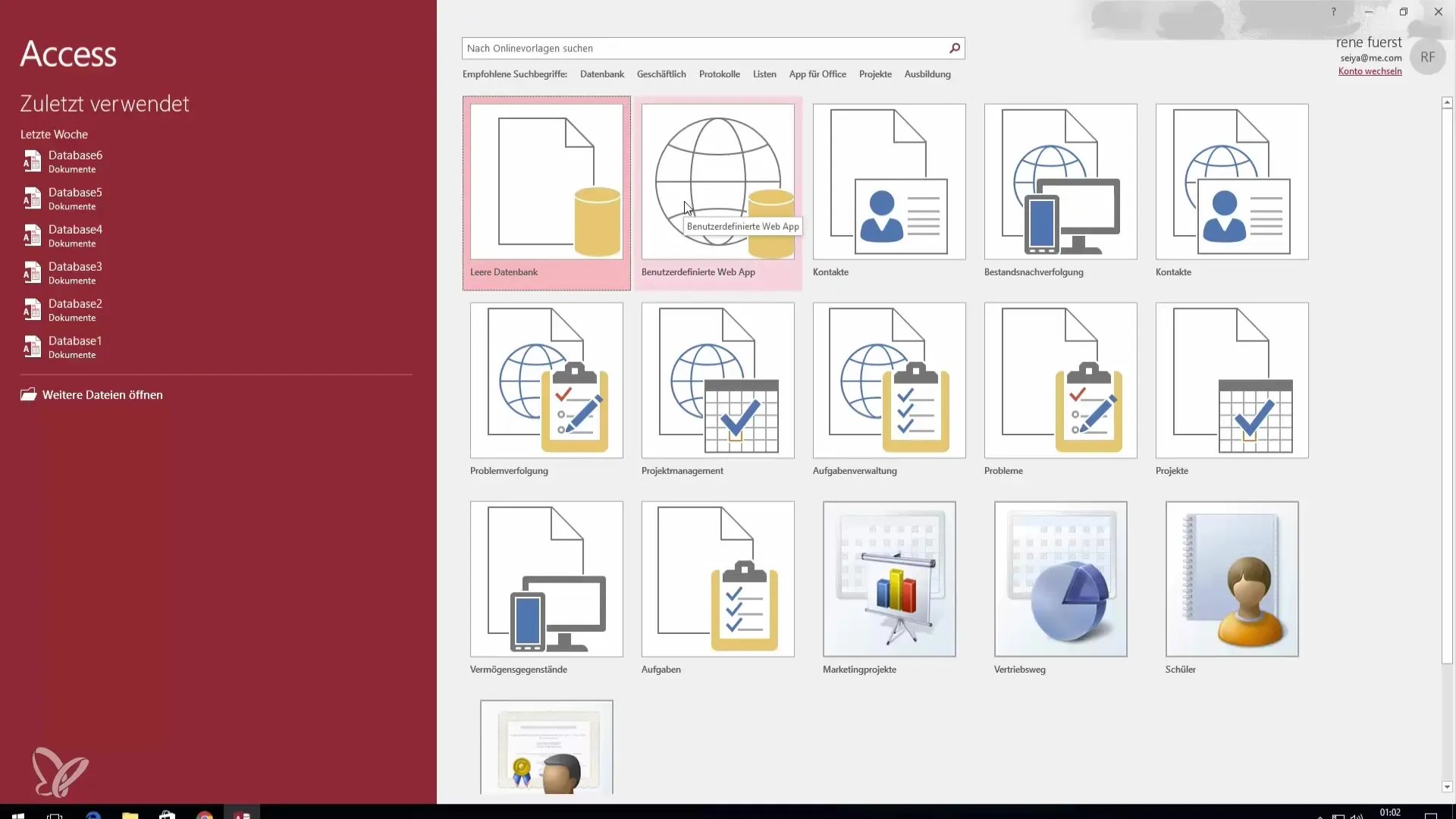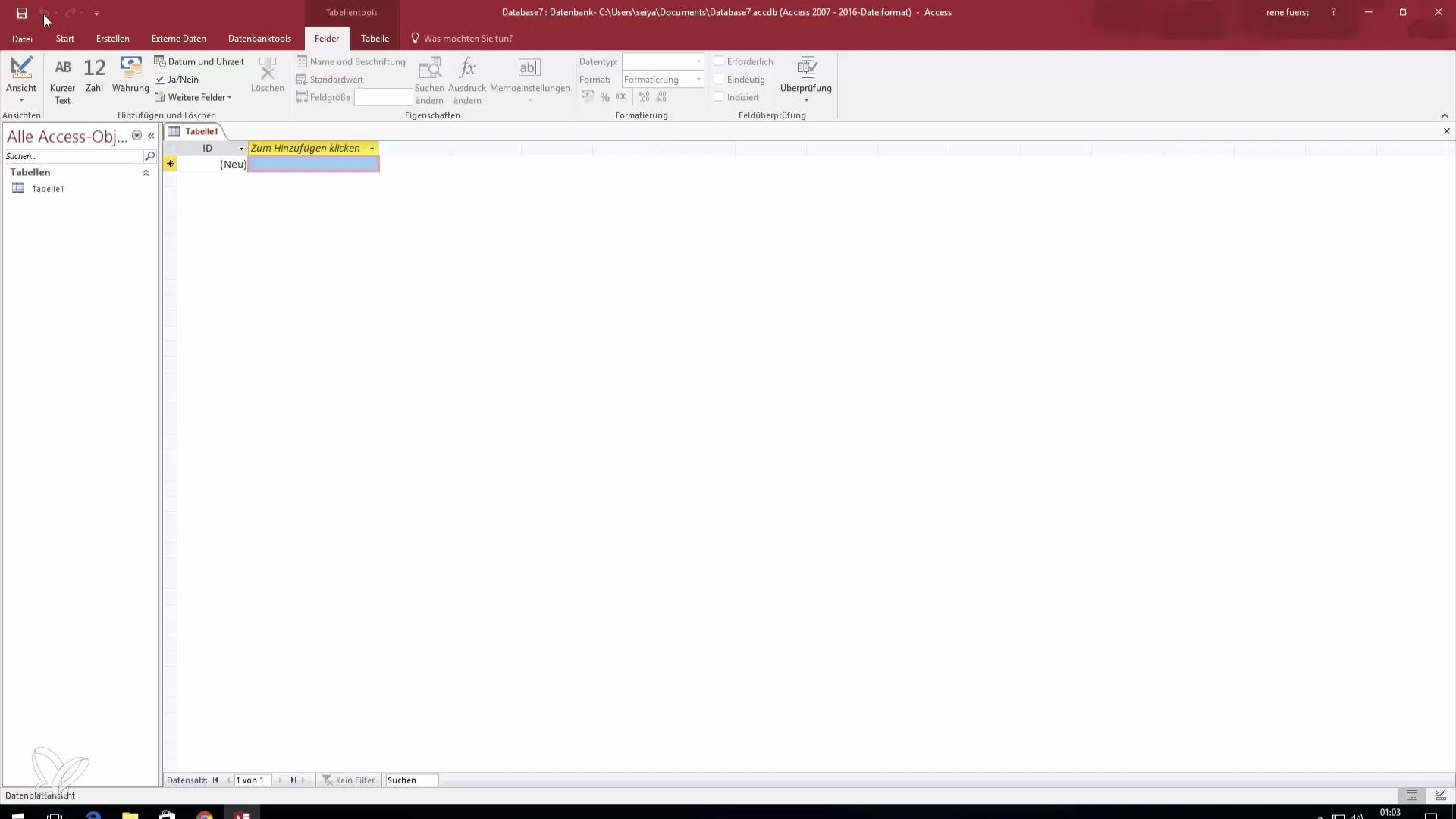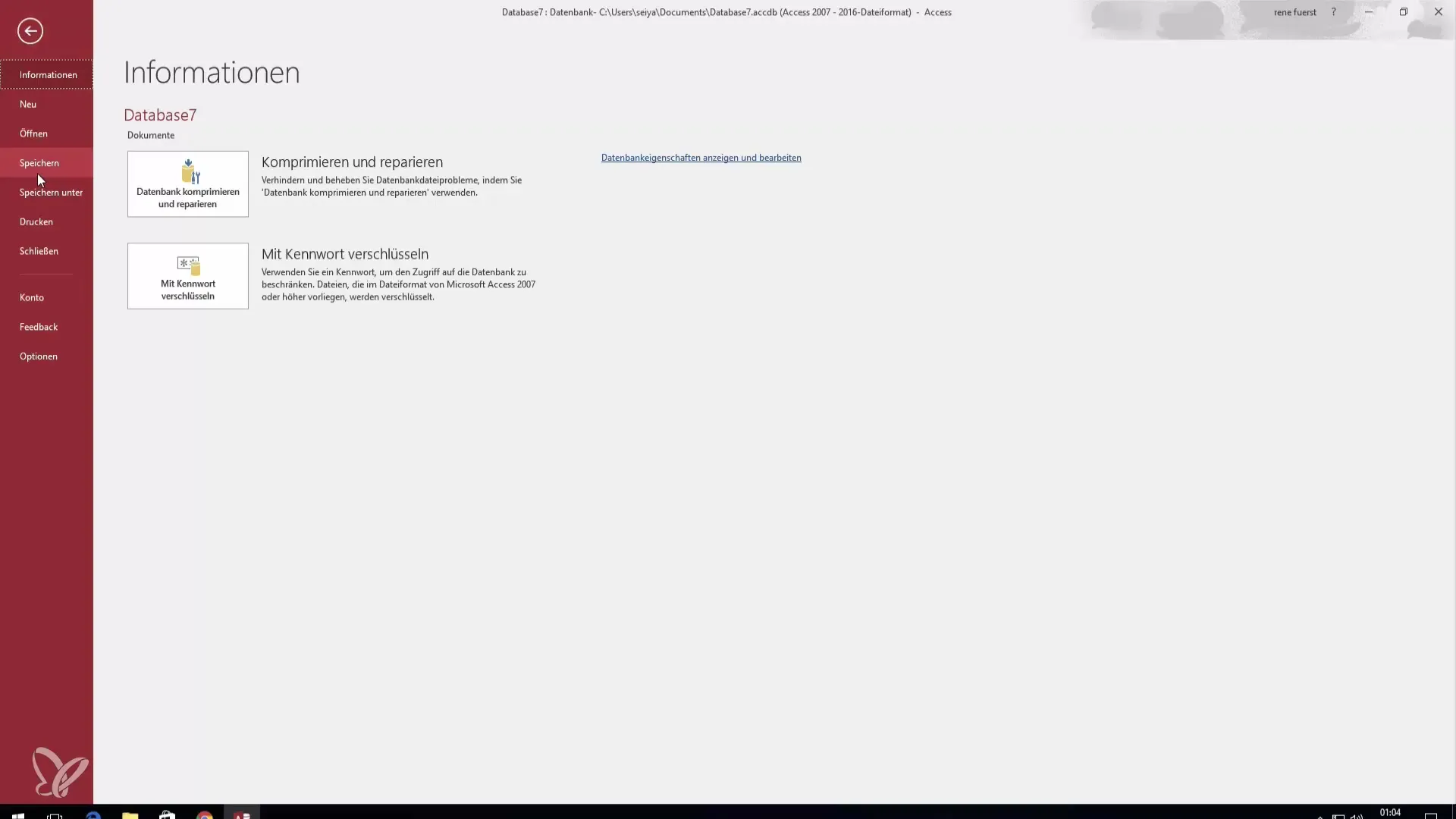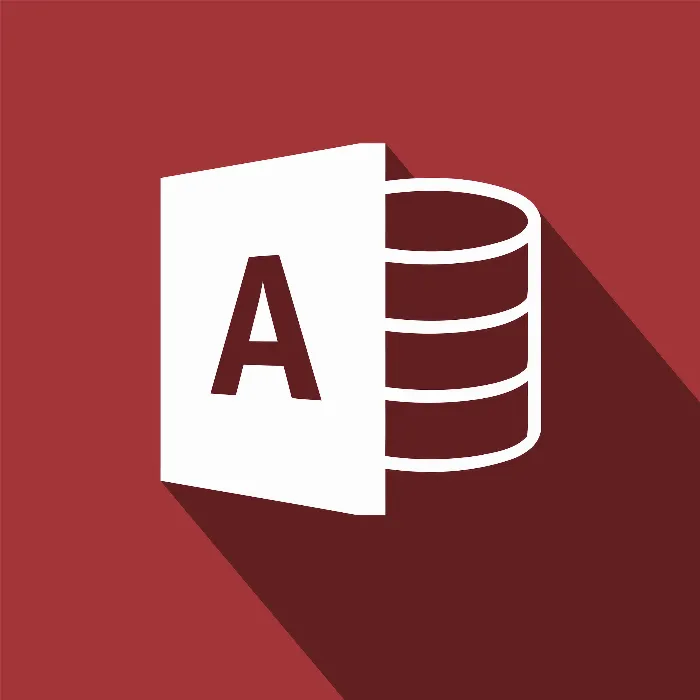You have now started Access 2016 and want to get an overview of the user interface. In this tutorial, you will learn step by step where to find the most important functions and tools and how to use them effectively. Let's dive in!
Key Insights
- The entry into Access begins with the choice between a blank database and a web app.
- The user interface is similar to other Office applications.
- All important tools are organized in various tabs that change based on the current selection.
- Help and learning resources are quickly and easily accessible.
Step-by-step Guide to Using Access 2016
First, you need to start the Access 2016 application. You will find the program in the list of installed Office applications. In Windows 10, Access is located under "A", while in Windows 7 it is listed directly in the Microsoft Office folder.
After the first start, you will see the option to create a new blank database or a web app. Note that a SharePoint server is required for web apps. If you start with a blank database, you have access to a desktop app that provides all the functions of Access.

Once you open the blank database, you will see an interface that should feel familiar from other Microsoft programs like Excel or Word. At the top of the menu bar, you see the Quick Access Toolbar with functions like Save, Undo, and Create New. You can customize this toolbar to quickly access frequently used functions.

A central element is the dynamically adjustable Table Tools toolbar. This becomes visible when you select a table and changes when you open forms or reports. This way, you always have the right tools at hand. Next to the toolbar, you also see the name of your current database and its location.
In the main interface, you will find various tabs that give you access to file operations. Here you have the option to create new databases, open existing ones, save them, or print them. You can also compress and repair your database, which is particularly useful for optimizing performance.

An additional important element is the view of the database. You can switch between different views such as design view and data view. In data view, you can enter records, while in design mode, the layout and structure of the database are defined.
Directly below the menu bar, you will find the navigation pane. If the space on your screen is insufficient, you can minimize this to create more space for your data. Adjusting this view helps you work better with the data without being distracted.
For extensive data analysis or report creation, additional tools are available to you. You can create queries, import and export data, and represent relationships between different records. This is where you can dive deeper into the possibilities of Access.
Finally, you have the option to import external data. If you need data from Excel or another Access database, you can easily insert it into your new project. This saves you a lot of manual work and time.
When exporting your data, you can convert it into various formats so that it can be reused by third parties or in other applications. A useful feature is that you can create an Excel file with all collected data, for instance.
An important element in the menu is the database tools. Here, you can not only compress and repair your database but also create macros and define relationships that exist between different tables in your database.
In the lower corner of the interface, you will see the current record you are editing. You can navigate through the records and also adjust this view. Depending on your needs, you can set various filters to optimize data management.
Summary - Understanding the Interface of Access 2016 in Detail
You now have a solid overview of the interface of Access 2016. Understanding this user interface is crucial for working effectively with the software and making the most of its capabilities. With the functions discussed so far, you are well-equipped to dive into the world of Access and optimize your work.
Frequently Asked Questions
How do I start Access 2016?You can find Access in the list of installed Office applications on your computer.
What options do I have when starting Access?You can create a new blank database or select a web app if you have a SharePoint server.
How do I change the Quick Access Toolbar?You can customize the Quick Access Toolbar at the top to add or remove frequently used functions.
What can I do in design mode?In design mode, you can change the layout and structure of your database.
How do I import data into Access?Use the import function to integrate data from Excel or another database into Access.


